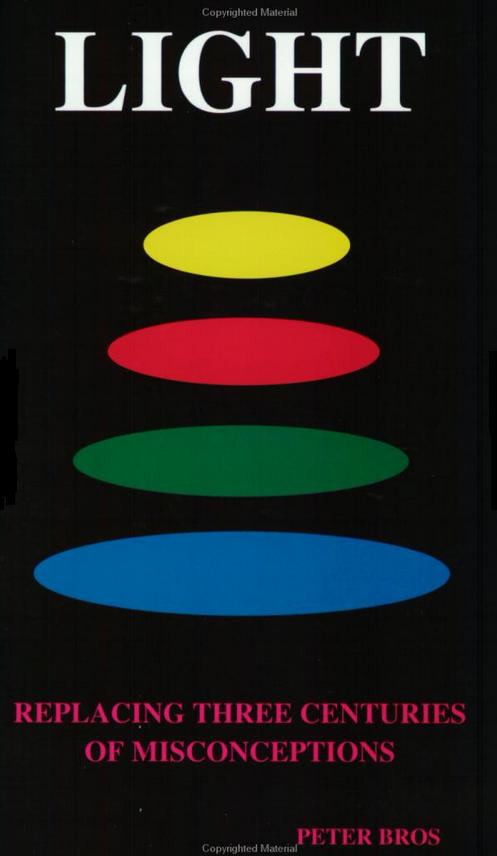What is more prevalent in our existence than gravity? Light! Empirical science, which claims to be a hair width away from finally explaining everything in the universe with the TOE (Theory of Everything) explains gravity away as a property of matter, as if this dynamic force were simply something like color or hardness. In short, its theory of gravity doesn\'t explain anything, so empirical science naturally claims in explains everything. Empirical science, on the other hand, has no idea what light is, so it says, well, light is simply nothing, it is like a water wave which doesn\'t exist unless there is a disturbance in water. Because water waves have no independent existence, the light that warms the planet and produces its life, illuminating the planet to allow the life that evolved there to navigate reality successfully, has no independent existence. Or, perhaps, empirical science has told us in the 20th Century, light might also, at times, appear as a particle, making light then the clearly understood wave/particle. This hogwash ignores electricity and magnetism, both of which are inextricably tied up with light. Of all the false thoughts adopted as laws and reality Newton foisted off on the world, the only one that was rejected was his particle. Because Newton believed that matter was made up uniformly of particles (he had to take this absurd position to prove that gravity was a property of matter), he also believed that light was a particle. Young, at the beginning of the 19th Century, demonstrated what he thought was the wave nature of light with his two-slit experiment, where light was split, then intermingled and collected on a screen. The screen disclosed black lines which Young interpreted as being identical to the absence of water waves when two waves intersect and the troughs of one cancel out the crests of the other. Unfortunately, Young\'s experiment, taken as proof for the wave nature of light today, was conducted before Henry\'s discovery of inductance, the flows that recombine electrical flows, in the1830\'s. If Young had known about inductance, he would have seen clearly what was happening: Light was made up of the same particles as electricity, those particles were neutralized by the inductive flows light (and electricity) form, and the dark lines that appeared on the screen were simply the result of the split light, overexpanded, being recombined by the inductive flows so that there was no light to fall on the collection screen. But empirical science is controlled by the timing of its creation of facts because once created, scientific facts become more real than real facts and crowd out reality at the expense of fantasy. Once Young established the similarity of light to electricity, any intelligent scientific observer would then have been able to understand why light not only diminishes inversely with the square of its distance, it diminishes uniformly, its structure controlled by the inductive flows it produces when it passes. And it wouldn\'t have been too much longer before open scientific investigation discovered that it was the recombining of the expanding light by its inductive flows that produced the force that causes objects to move back towards the source of the expanding electromagnetic emission fields produced by cooling objects such as the sun and the planets, light and gravity being the only two phenomena that measure out exactly the same in their physical operation. Light: Replacing Three Centuries of Misconceptions unifies light, electricity and magnetism with a physical explanation of how the single particle with its two properties disclosed in Atoms, Stars and Minds produces each. It also tackles the hardest job in science, putting the spectrum back in its proper order, with yellow the shortest frequency (as opposed to the misguided notion of wavelength), red, rather than blue the next shortest, and then green followed by blue, the longest, setting a universe based on red as the shortest wavelength, on its tail, reversing the Big Bangers and reversing the rotation of the galaxy so that it comes within the actual reality of the movement of the solar system.
Light: Replacing Three Centuries of Misconceptions (FBP Copernican Series, V. 6) (Buy Now)
KeyWords: light
Empirical science makes the unexamined assumption that colors are lined up by wavelength the way they emerge from a prism, blue to red, with red the lowest wavelength. Careful analysis of light\'s luminosity, the way the eye color adapts and the way colors are produced by mixing pigments or adding colored light, however, demonstrate that light is ordered from high frequency white light to low frequency blue light with yellow, red and green frequencies descending in that order between.
The misconception that light is ordered the way it comes out of a prism is one misconception replaced in Light, the sixth volume of The Copernican Series. The misconception that white light is made up of all colors, which requires that matter absorb all colors but the color reflected, is eliminated in favor of light being a frequency which is reduced when it interacts with matter. With light a frequency, the misconception produced by Young\'s two-slit experiment that light is a wave is eliminated in favor of the actual dynamics of the experiment showing light to be made up of a flow of particles organized into packets by the process of combustion.
A further misconception, that light is not made up of what gives it off, and therefore does not exist between its cause and effect, is eliminated in favor of a clear explanation of the structure of light, what it is, how it is produced, how it moves, how it interacts with matter, and how it dissipates. With light something that is real, that is actually produced by matter, the misconception of polarity is removed from the current concept of the atom that makes up matter and an atom constructed that actually produces light.
With a clear picture of the structure of light and the matter that produces it, Light describes the relationship of light to heat, energy, electricity and magnetism, and the effect of light in physical reality, from mirages to morning glories, lightning to tornadoes.



